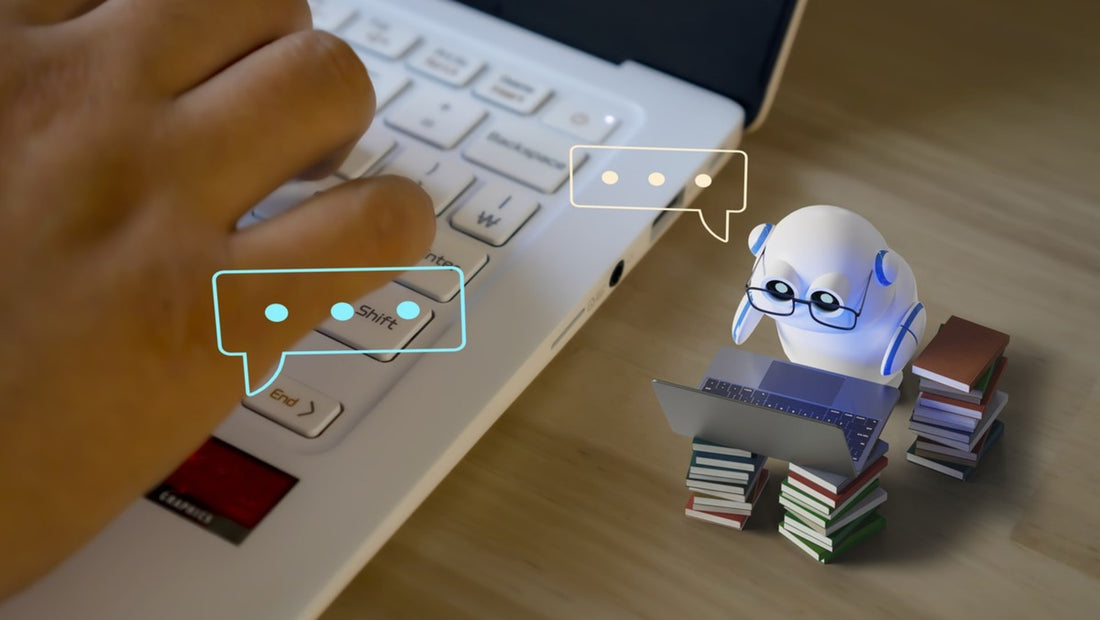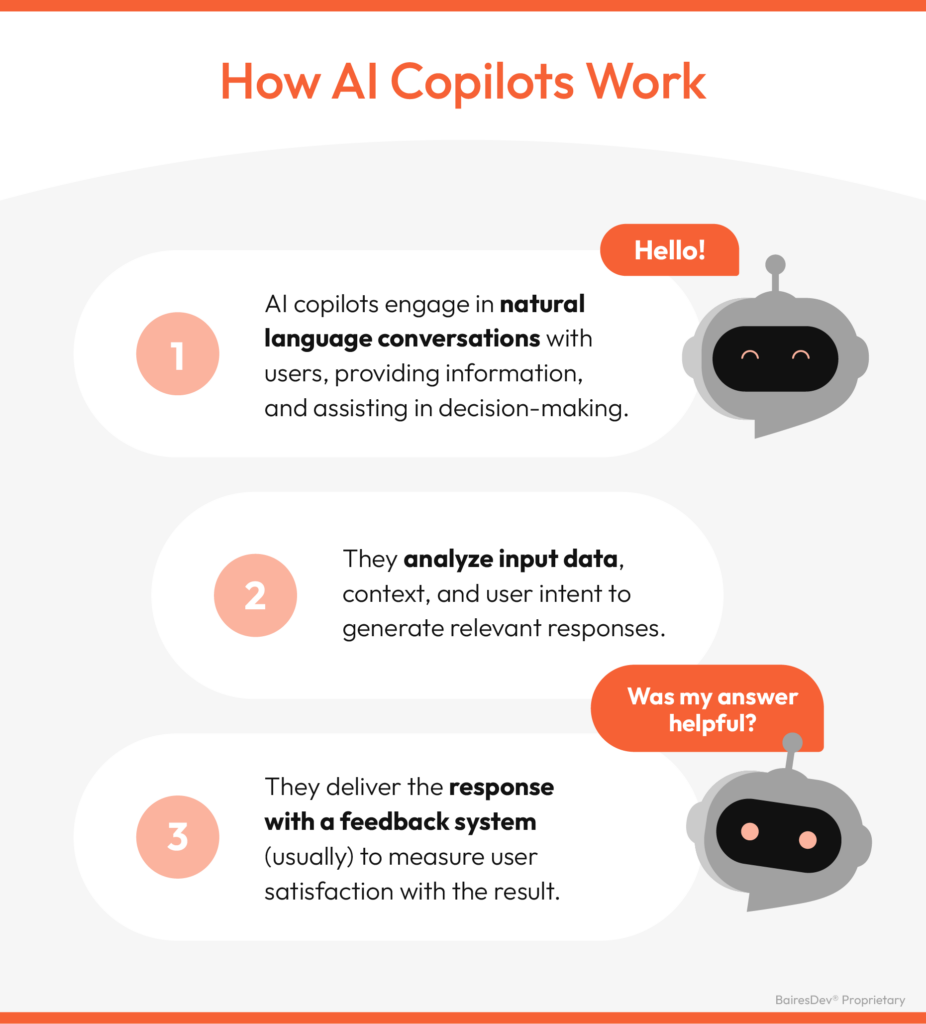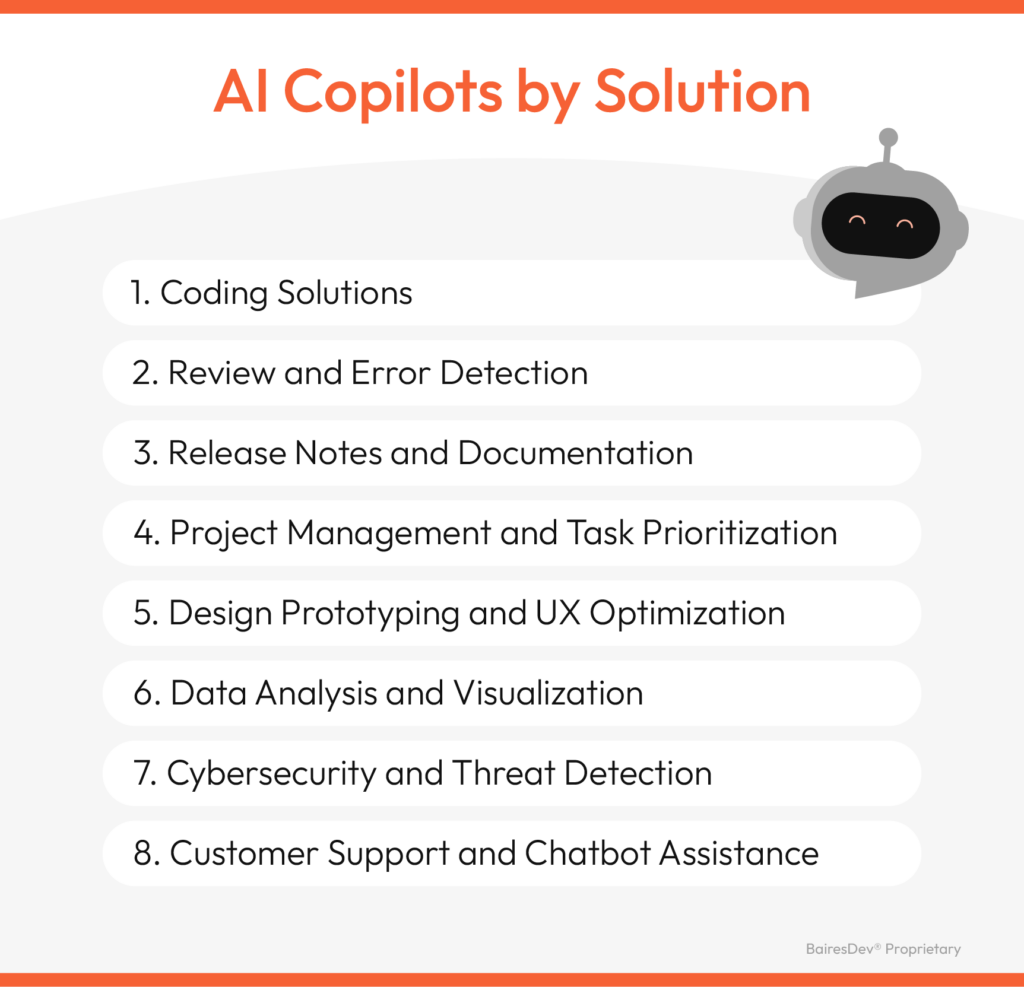AI copilots are becoming more powerful every day, but their role is not to take control of our work. They are here to help and accompany us. It is technology as a relational solution.
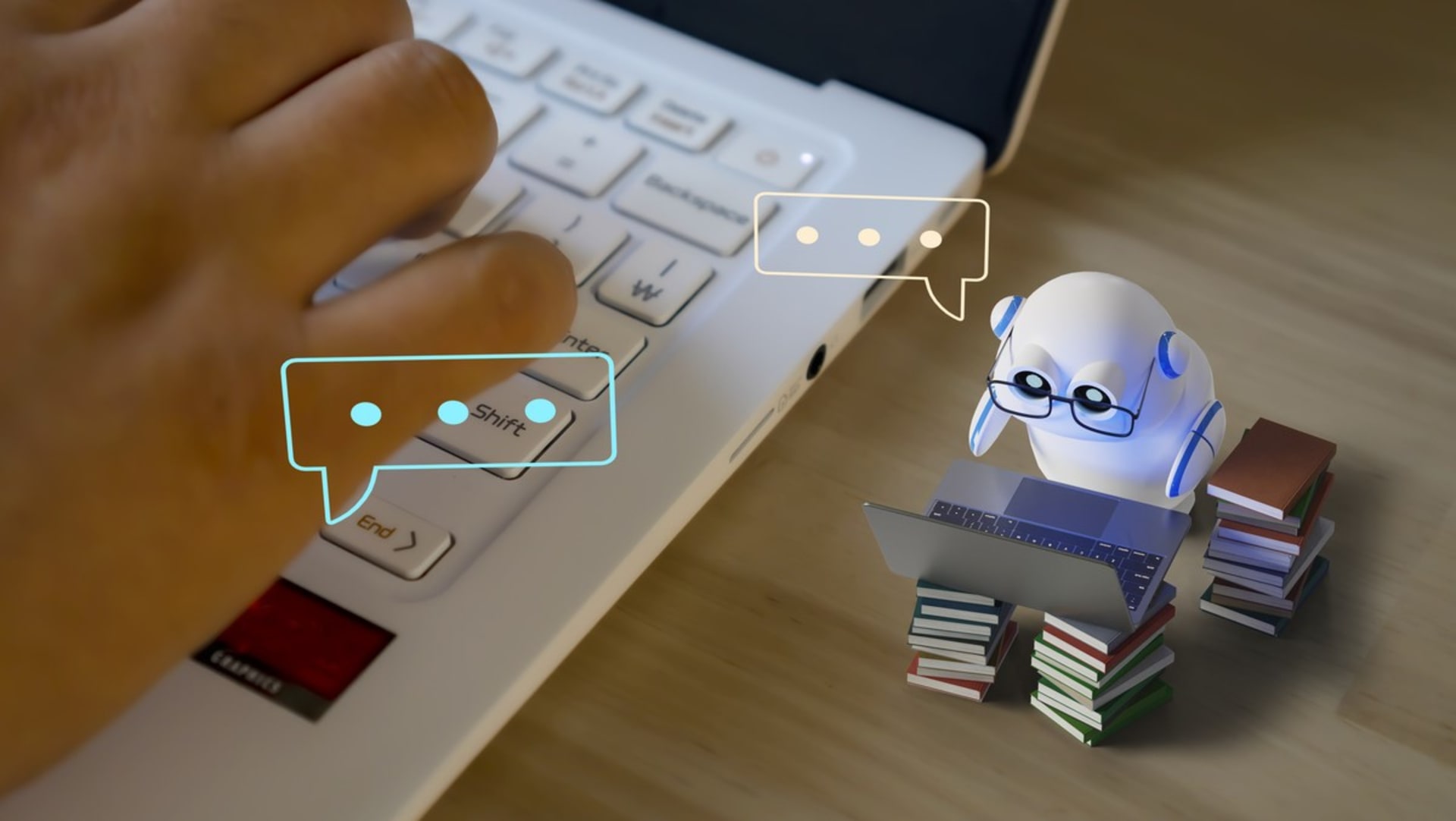
Right now, GenAI is arguably the biggest technology trend with expanding applications. One of them is serving as a co-pilot at the workplace. According to a survey conducted by Forbes, 47% of companies use AI assistants . This means that almost half of companies are potentially leveraging AI co-pilots, creating high expectations for their normalization of work.
AI copilots are advanced artificial intelligence systems that utilize large language models (LLMs) to process and respond to user input in a manner similar to human interaction. Designed to assist users with a variety of tasks, these AI companions are integrated into different applications and environments, improving the user experience.
Its main objective is to support decision-making processes and increase productivity in various areas. As AI continues to integrate into business practices, understanding how AI copilots work becomes crucial.
How do AI copilots work?
These digital companions assist, augment, or automate specific functions, making them valuable tools. Copilots are trained based on large amounts of curated data. This data can be broad, as seen in general LLMs like ChatGPT, or specialized, like the data used for specific code tasks in tools like GitHub Copilot.
From this data, the copilot learns how to make predictions in their respective fields. It involves predictions and assumptions based on complex statistical models. The user interface is equally important. In fact, a key aspect of AI copilots is their broad accessibility.
Communicating with an LLM is designed to be as intuitive as messaging a person, although learning specific prompt inputs is advisable. Copilots provide an experience by establishing a user-model relationship through a user-friendly interface and other middleware.
Companies are leveraging copilots to automate repetitive or time-consuming tasks across multiple departments. By handling these tasks, they allow human professionals to focus on more complex and creative endeavors. It's important to note that not all copilots are created equal. Understanding the characteristics of the different types will allow for better integration and more effective use.
Types of AI Copilots
Although this GenAI tool is a relatively new and evolving technology, four copilots can currently be categorized. Here we summarize everything from the least complex solutions to the most refined.
Specialized GPT applications
For those new to AI integration, specialized GPT (Generative Pre-trained Transformer) applications offer an affordable option. These apps use models like OpenAI's ChatGPT to create specialized, targeted assistants without intensive coding. They can be customized with specific documentation or API resources to handle tasks within defined contexts.
- Primary use case: Specialized task handling.
- Benefits: Relatively easy to set up with no-code platforms, performing specialized tasks effectively.
- Limitations: Limited by the scope of the data and documents provided and the functionalities of the APIs it uses. It is also limited by the product interface (e.g. ChatGPT is tied to the interface provided by OpenAI).
As a use case, look no further than apps like Grammarly or Hemingway Editor, which are powered by AI. Writing apps like these help users edit, improve, draft, and find the right tone for a type of post.
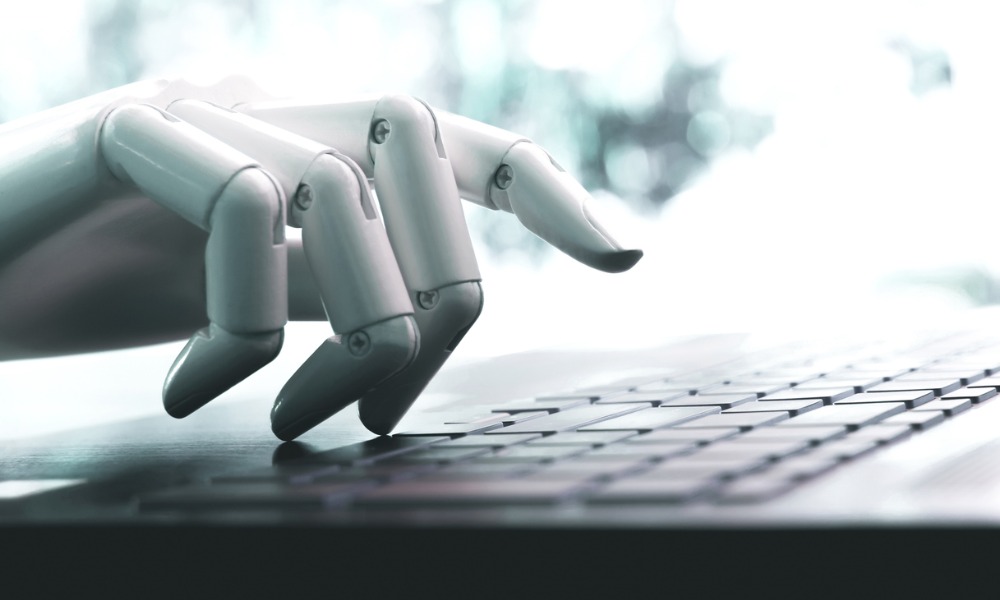
AI Chat Bot
The AI chatbot is the entry level of AI copilots, focusing on handling support queries using pre-existing documentation. This type manages a high volume of common queries by scanning vectorized databases of user manuals, FAQs, and other resources to provide relevant information quickly.
- Primary use case: Customer support.
- Benefits: Reduces human support team workload by efficiently managing routine queries.
- Limitations: Complex, unique, or nuanced customer requests cannot be handled without human intervention.
Do you remember Clippy? It was an office assistant released in 1996 designed to provide help and tips on using Microsoft Office tools. Chatbots have evolved significantly since then. Today, they are widely used for online customer support, offering information and guidance 24 hours a day. Modern implementations use vector databases and semantic search technologies to search and return information to the user.
AI Assistant
The AI assistant not only provides information but can also perform actions based on user commands. This type of copilot integrates with real-time APIs and databases to perform tasks such as scheduling appointments, controlling smart devices, or initiating workflows.
- Primary use case: Task execution and workflow automation.
- Benefits: Increases productivity by automating routine tasks and integrating with various tools and platforms.
- Limitations: Dependent on the readiness and compatibility of APIs for continuous operation, with resources confined to the defined scope of the API.
Most smartphone AI assistants fall into this category. Ask Gemini Beta or Siri for a timer; they will call the application's API and run it automatically. Likewise, if you ask Alexa to order a product, she will take care of the entire process.
Although the terms “AI assistant” and “AI copilot” are sometimes used interchangeably, there is a subtle distinction. AI copilots are typically more collaborative, actively helping users perform specialized tasks. However, they coexist in the universe of GenAI copilots.
Full AI copilot
AI Copilot offers a comprehensive solution, serving not only as a reactive tool but also as a proactive advisor. It understands context, anticipates user needs, and provides personalized advice along with taking action. This type requires deep integration with internal and external data platforms, sophisticated API interactions, and possibly the development of specialized ML models.
- Primary use case: Consulting, making complex decisions and delivering comprehensive actions.
- Benefits: Provides strategic insights and predictive assistance, adapting to complex user needs and improving decision-making processes.
- Limitations: Significant development time and resources are required to achieve full functionality, including the potential need for custom AI model training.
GitHub Copilot is the prime example here, running in its integrated development environment (IDE). It evaluates the developer's code and provides advice as soon as it notices a pattern. Developers have found this type of tool to be a game changer, reporting 55% faster task completion .

These categories of AI copilots, each suited for different tasks, find practical employment in various scenarios, as demonstrated by the following use cases.
Use cases in functions and areas
AI copilots, while known for their ability to generate code and support software development, have capabilities that go far beyond these tasks. Its ability to process large volumes of data is useful for executives and managers who need to understand the essence of reports, customer feedback or market research results.
Management and Production
These AI systems can help organize digital workplaces. From sorting emails to categorizing documents on a cloud server, AI co-pilots can automate crucial digital file management tasks. Microsoft's Copilot for OneDrive is a good example of this.
Moving into production, AI co-pilots can help create a variety of content. This includes generating reports, drafting business documents, creating presentations and even developing marketing material such as blogs or social media posts. For example, Jasper is a popular AI co-pilot for amplifying marketing content and improving marketing performance.
Data and Research
Copilots are valuable for time-consuming searches. They collect information from various sources efficiently. Those specializing in market research and insights like Olvy , automate research processes, extract market trends, and monitor competitors. They can scour the Internet and specialized databases much faster than a human.
One of the most impactful capabilities of AI copilots is the ability to analyze large sets of data quickly and accurately. They can find correlations that may take longer to discover, from financial modeling and risk assessment to customer data analysis. A data scientist co-pilot not only assists, but potentially fully automates data and predictive analytics . An example of this is Super AI , a co-pilot that guides data analysts through business insights and suggests appropriate data dashboards.
Regardless of the copilot, remember that human supervision is essential. Your team must ensure that AI-generated material matches the right context and is aligned with business and quality standards. With this in mind, it is our turn, as team leaders and decision makers, to welcome AI copilots as an essential element in our business toolkit.
You can integrate an option available on the market or develop one that suits your business needs. Our expert engineers can support your AI and ML projects, ensuring a smooth and thoughtful adoption process. Additionally, following established best practices will maximize the benefits of this technology.
Best practices for using AI copilots
It's time to address a significant concern: hallucinations in AI results. Although statistical models are powerful tools – often producing good results – they are not without errors. Despite ongoing efforts to improve its accuracy, creating perfect AI remains a challenge. When using GenAI, you should do what the Russian proverb says: Trust but verify .
In addition to being on the lookout for hallucinations, these best practices will help you ensure productivity and accuracy to increase your teams' capabilities.
Select the appropriate AI copilot
Select a copilot who excels in areas relevant to your specific needs , such as language understanding or data analysis. Investigate different AI technologies to identify the one that best meets your goals.
Start with targeted pilots
Before deploying AI copilots across your organization, start with pilot projects that target the areas most likely to benefit, such as improving customer support efficiency or streamlining project management processes. This approach allows you to assess impact and address any challenges on a manageable scale.
Consider hands-on training and scenario testing
Train your workforce to interact with AI copilots as if they were collaborating with human colleagues who don't always provide the correct answer. Encourage the team to critically evaluate the suggestions provided by the AI and use them as starting points rather than definitive solutions . Regularly test the copilot in different scenarios to assess the reliability and accuracy of your assistance.
Balance speed with human creativity
Use AI copilots for tasks that benefit from speed and accuracy, such as data retrieval and routine queries. Human professionals must be empowered to approach goals that require creativity, problem solving and strategic thinking. This balanced approach ensures that originality and innovation remain at the forefront of your business's value proposition.
Waiting anxiously
According to the New York Times, industries such as retail, restaurant and transportation services may be less impacted by GenAI. However, in most other industries, the adoption of copilots is expected to reshape traditional roles and simplify workflows.
As we explored, AI solutions like copilots augment skills rather than replace them. Making AI part of your team will require a new approach to prioritizing and automating tasks. Simultaneously, you must develop social skills such as adaptability, problem solving and critical thinking. This will bring your team closer to meeting goals with the conscious use of AI copilots.
Now may be the best time to integrate this technology into your strategic planning. Discover how we can help you implement AI solutions tailored to your business objectives.

